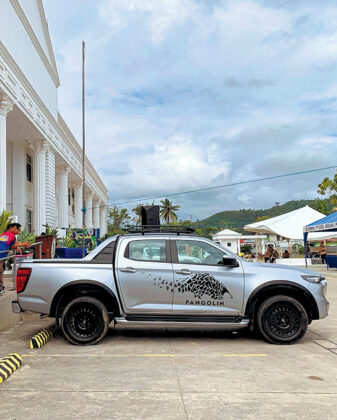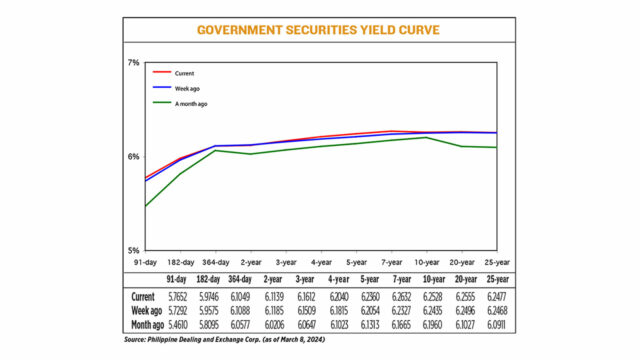Picking up the balintong cause

Mazda PHL helps those helping our country’s pangolins
THERE ARE MANY ironies in this world; let me point out one of them.
Not many people are familiar with the pangolin — most especially the Philippine Pangolin — and yet, the pangolins of the world are identified as the most trafficked wild animal on earth. How can they be pushed to the brink of extinction when people don’t even recognize them? Well maybe that is the problem in the first place.
Let’s start solving the problem now. It begins with your attention and awareness.
The Philippine Pangolin is endemic to the Palawan region, naturally inhabiting four islands, which include Palawan, Busuanga, Culion, and Calauit. They are nocturnal animals which primarily feed on ants, termites, and other insects. And they locate prey via a strong sense of smell, then use their forefeet to rip insect nests open for them to feed on. Simply put, they are scaly anteaters, and it turns out that we have our own unique species of them.
As a matter of fact, they have only been recognized as a unique species beginning in 1998. This is the Manis culionensis — distinct from the Sunda Pangolins, which are scattered around Southeast Asia. Locally, the pangolin is called the balintong, which translates to somersault, because of the way it rolls itself into a scaly ball as a defense mechanism, when threatened.
Are these animals captured to become exotic pets? Absolutely not; it is worse than that. They’ve been aggressively hunted to near extinction for their meat, scales, and other body parts which are commonly used as ingredients for traditional Chinese medicine.
The reality is that the medicinal value of pangolin parts remains unfounded. Their scales are simply made of keratin — which essentially means that these parts are just like hairs that are cemented together. Yet, after stronger efforts were made by the international community to bust the illegal wildlife trade rings in Indonesia and Malaysia, the Philippines consequently saw an alarming spike in the poaching activities that specifically target the Palawan Pangolin. To our dismay, Filipinos themselves would trap and sell Palawan pangolins — often smuggling them into China.
As kind of the remaining beacon of hope for this wildlife tragedy, there are conservationists out there who have been dedicating much of their lives to saving the Palawan Pangolin. Among the leaders in relentlessly championing the survival of this animal is the Katala Foundation — a nonprofit, nonstock, nongovernmental organization led by its steadfast and Filipino-speaking German founder, Dr. Sabine Schoppe.
The Katala Foundation is particularly active in protecting and conserving several threatened, endemic species in the country, especially those found in Palawan — which is sort of like our country’s last frontier of nature. Through research, community engagement, and on-the-ground conservation efforts, the Katala Foundation endeavors to secure a future where Palawan Pangolins can recover in their numbers and coexist with the local human communities.
Enter Mazda Philippines and its special pickup: the Mazda BT-50 4×4 Pangolin Edition. Its namesake is certainly no coincidence. It was Mazda Philippines President and CEO Steven Tan’s idea to name their proud pickup as such because he surmised that when people bought the product, the Pangolin name would somehow tickle its owner’s curiosity. And that awareness alone — knowing what a Pangolin is, that we actually have them here in the country, and that they are in deep trouble — is already a large step in the right direction.
But Mazda Philippines didn’t stop there. Under Steven Tan’s leadership, the company initially committed to lend out a Mazda BT-50 4×4 Pangolin Edition pickup truck to the Katala Foundation for at least a year, in order to support their scientific ventures into the forests of Palawan, to set up camera traps and other things to further their study of the critically endangered species.
Following that run, which already started a few years back, Mazda Philippines then completely donated two Pangolin Edition pickup trucks (a few years apart from each other, and the most recent one being the Mazda BT-50 Pangolin Edition II) to the Katala Foundation.
The Mazda BT-50 4×4 Pangolin Edition II is the Japanese brand’s boldest interpretation of its pickup truck yet. It is powered by a 3.0-liter turbodiesel engine that can generate 190ps of power alongside a delightful 450Nm of torque (starting at 1,600rpm) — an extremely useful feature for braving the challenging, muddy rainforests of Palawan. It also utilizes an electronic rear differential lock, (it is crucial for a real off-roader to have rear differential locking ability) — an important feature when running some serious off-road missions.
What an awesome partnership for a truly wonderful cause! If you would like to learn more about the Katala Foundation and extend your help (because they really need all the help they can get!), you may explore your options by visiting the website www.philippinecockatoo.org.
Please, please, let’s help save our gentle balintongs!

























